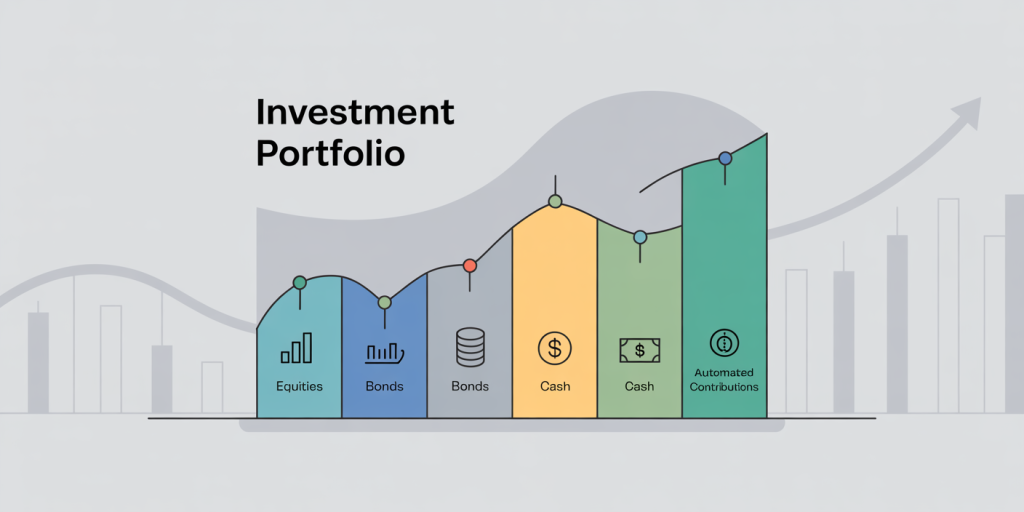How to Set Personal Investment Principles That You’ll Actually Follow
Investing can be a powerful tool to build wealth, secure financial independence, and prepare for a comfortable future. However, many investors fail not because they lack funds or knowledge but because they do not have clear, actionable principles guiding their decisions. Without a set of personalized investment principles, it’s easy to fall prey to market hype, emotional reactions, or inconsistent strategies that erode returns. Setting personal investment principles tailored to your unique circumstances can transform your investing mindset and improve your long-term results.
Understanding how to create principles you’ll genuinely stick to requires insight into your goals, risk tolerance, and behavioral tendencies. This article explores the process from start to finish, integrating practical examples and data-driven advice that help you develop guiding rules for your investments. By the end, you will be equipped not only to craft your own personal investment framework but also to commit to it faithfully, avoiding common pitfalls many investors face.
—
Understanding Your Financial Goals and Time Horizon
Before establishing investment principles, it’s critical to define your financial goals clearly. Are you saving for retirement, a house, your child’s education, or building an emergency fund? Each objective demands a different approach, asset allocation, and risk tolerance. For instance, a 30-year-old targeting retirement in 35 years can afford to take more risk compared to a 60-year-old nearing retirement age.
Research shows that goal-oriented investors tend to stay more disciplined and outperform others. According to a 2022 report by Vanguard, investors aligned with clear goals experienced 18% better portfolio outcomes on average over 10 years compared to those with vague or shifting objectives. Specific goals serve as a compass, helping you align principles such as asset diversification, withdrawal strategies, and rebalancing frequency.
Time horizon influences the risk you can absorb. For example, if you are investing for a down payment on a home in five years, prioritizing capital preservation with safer investments like bonds or high-yield savings is prudent. Conversely, investing for a 30-year retirement timeline allows for a higher equity allocation, despite short-term volatility. Writing down your goals and target timelines lays a strong foundation for meaningful investment principles.
—
Defining Your Risk Tolerance and Behavioral Style
One of the most critical—yet overlooked—steps in setting personal investment principles is honestly assessing your risk tolerance. Risk tolerance is your ability and willingness to endure investment volatility without panicking or deviating from your plan. Many investors overestimate their risk capacity only to sell at market lows, crystallizing losses.
There are multiple risk tolerance questionnaires available, such as those used by Morningstar or financial planners, that help quantify your comfort level with different levels of market fluctuation. The CFA Institute recommends combining quantitative risk scores with real-world behavioral analysis—for instance, reflecting on past reactions to market downturns—to get an accurate profile.
By understanding your behavioral style—whether you’re a cautious investor who prioritizes capital preservation or an aggressive one chasing growth—you can tailor principles around asset allocation and rebalancing rules you will actually follow. For example, a risk-averse investor might adopt a principle like “never allocate more than 40% to equities,” ensuring peace of mind during volatile periods. A more aggressive investor might embrace principles such as “increase equity exposure by 5% every five years.”
A practical case comes from Howard Marks, the famed investor who emphasizes “second-level thinking”—anticipating how the majority will react in emotional markets. His principles include patience and avoiding herd mentality, highlighting how blend of risk assessment and temperament shapes successful investing.
—
Creating Simple and Actionable Rules
Once you understand your goals and risk tolerance, distill the investment approach into a set of clear, simple principles. Complexity is the enemy of consistency: intricate rules with too many exceptions are harder to follow under stress. The goal is to outline a few foundational principles that serve as your “investment GPS”—easy to recall and apply.
A useful framework is to categorize principles into major buckets:
| Principle Category | Example Rule | Rationale |
|---|---|---|
| Asset Allocation | Maintain 60% equities, 30% bonds, 10% cash | Balances growth with capital preservation |
| Contribution Rules | Invest $500 monthly regardless of market cycles | Enforces disciplined investing and dollar-cost averaging |
| Rebalancing | Review portfolio every 6 months and rebalance if allocations differ by 5% | Keeps risk exposure in check |
| Risk Management | Limit exposure to any single stock to 5% | Avoids concentration risk |
| Emotional Control | Do not sell during market drops below 10% | Prevents panic selling and loss realization |
Consider the example of Vanguard founder John Bogle, who advocated simple investing principles such as low-cost index fund investing, buy-and-hold discipline, and avoidance of market timing. These simple, repeatable rules made following his principles feasible for millions.

—
Implementing Accountability Mechanisms
Even with the best principles, a common challenge is adherence when markets become turbulent or when emotions cloud judgment. Implementing accountability mechanisms can dramatically increase the likelihood of following your predefined rules.
First, document your principles formally. Write them in an investment journal, create a digital document, or use an app like Evernote or Notion. This step signals commitment and makes principles accessible during moments of doubt.
Second, schedule regular portfolio reviews aligned with your rebalancing principle. Review meetings can be monthly or quarterly, depending on your level of activity. Use these sessions to check if your portfolio matches your allocation targets and to assess whether your financial goals or risk tolerance have evolved.
Third, consider involving a trusted accountability partner, such as a financial advisor, spouse, or peer investor group. Sharing your principles with others increases pressure to adhere and provides an external perspective during emotional times. For instance, a 2020 study published in the Journal of Behavioral Finance found that investors with accountability partners were 35% less likely to deviate from their strategies during market volatility.

Lastly, automate contributions and rebalancing where possible. Automatic monthly investments into a diversified portfolio limit the temptation to market-time. Robo-advisors like Betterment or Wealthfront offer automated rebalancing respecting your risk profile.
—
Learning from Real-World Examples and Historical Data
Examining real-world cases reinforces how following clear principles benefits over time. Consider the contrasting examples of two amateur investors during the 2008 Global Financial Crisis: Investor A had a principle to maintain a 70/30 equity-bond split and avoid panic selling. During the crisis, despite portfolio volatility exceeding -40%, Investor A stayed the course, maintained contributions, and rebalanced quarterly. Investor B had no defined principles and frequently sold stocks after sharp declines, attempting to “wait it out.” Resultingly, Investor B missed key rebounds in 2009 and suffered a net loss over a multi-year horizon.
According to data from JP Morgan Asset Management, the S&P 500 recovered 50% within one year after the 2008 crash. Missing such rebounds by panicking cost Investor B significantly in wealth accumulation.
Another illustrative case is Warren Buffett, whose principle “be fearful when others are greedy and greedy when others are fearful” allowed him to buy undervalued stocks during downturns. His disciplined adherence to this contrarian principle helped create long-term wealth.
Investors who create and follow such guiding lights minimize emotional decision-making and enhance patience—a major driver of compounding growth.
—
Future Perspectives: Adapting Principles in a Changing Investment Environment
The investment landscape evolves continuously with innovations such as ESG (Environmental, Social, Governance) investing, cryptocurrencies, increasing automation, and shifts in global markets. Your personal investment principles should not be rigid dogma but adaptable frameworks guiding you amidst these changes.
For example, many investors are incorporating ESG criteria into their principles, reflecting values along with financial returns. The Global Sustainable Investment Alliance reported $35 trillion in sustainable investing assets worldwide in 2020, highlighting growing importance.
Similarly, the rise of cryptocurrencies compels investors to consider principles around emerging asset classes, such as limiting exposure to no more than 1-3% of total portfolio due to high risk and volatility.
Adopting technology can also enhance adherence—for instance, using AI-driven platforms that monitor portfolio drift and suggest rebalancing alerts in real-time.
It’s prudent to schedule an annual principle review to ensure alignment with changing personal circumstances and market environments. But remember, the key to success remains consistent adherence to your core principles rather than chasing every new trend.
Investment principles are your personalized roadmap through a sometimes unpredictable financial journey. When crafted thoughtfully and followed with discipline, they can empower you to build wealth steadily while reducing stress and impulsive decisions. With clear goals, defined risk tolerance, simple actionable rules, accountability mechanisms, and adaptability, your investment framework will be a reliable compass guiding you for decades to come.

